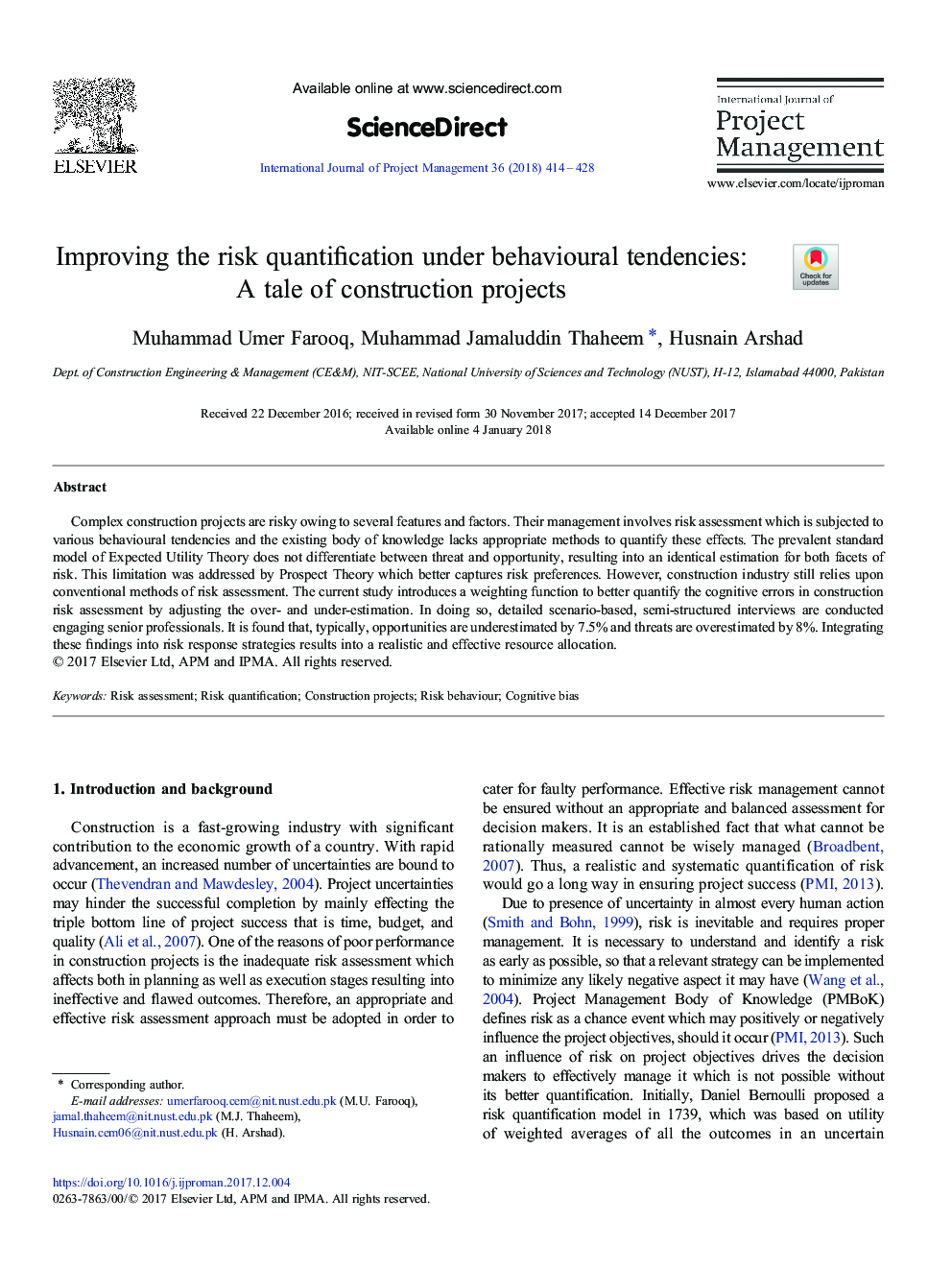| Article ID | Journal | Published Year | Pages | File Type |
|---|---|---|---|---|
| 6748028 | International Journal of Project Management | 2018 | 15 Pages |
Abstract
Complex construction projects are risky owing to several features and factors. Their management involves risk assessment which is subjected to various behavioural tendencies and the existing body of knowledge lacks appropriate methods to quantify these effects. The prevalent standard model of Expected Utility Theory does not differentiate between threat and opportunity, resulting into an identical estimation for both facets of risk. This limitation was addressed by Prospect Theory which better captures risk preferences. However, construction industry still relies upon conventional methods of risk assessment. The current study introduces a weighting function to better quantify the cognitive errors in construction risk assessment by adjusting the over- and under-estimation. In doing so, detailed scenario-based, semi-structured interviews are conducted engaging senior professionals. It is found that, typically, opportunities are underestimated by 7.5% and threats are overestimated by 8%. Integrating these findings into risk response strategies results into a realistic and effective resource allocation.
Related Topics
Physical Sciences and Engineering
Engineering
Civil and Structural Engineering
Authors
Muhammad Umer Farooq, Muhammad Jamaluddin Thaheem, Husnain Arshad,
